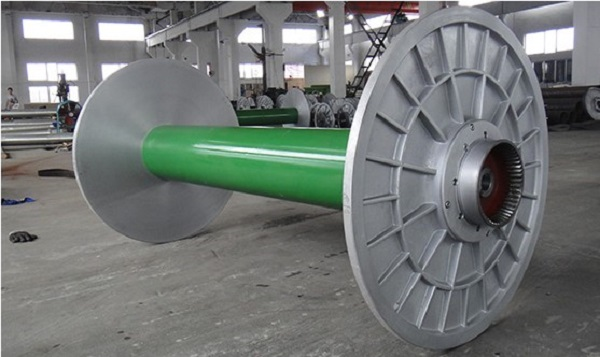In the textile industry, warp beam and weaving beam are very common and every textile factory uses them. But do you know what position warp beam occupies in the textile industry? Do you know that warp beam is an indispensable equipment for the textile industry, knitting mills, comprehensive factories, etc.? Do you want to know how many advantages warp beam has?
What is warping?
Warping is the process of winding a certain number of warp yarns and warp yarns with a specified length and width parallel to the warp beam or weaving shaft, and it is one of the preparation processes before weaving. The warp yarns after warping are used for sizing and threading. Warping requires that each warp yarn has the same tension, appropriate tension, as little wear as possible, and is evenly distributed on the warp beam or weaving beam. If it is colored yarn or different materials, The arrangement of fineness (special number or count), twist direction, etc. conforms to the technical requirements.
.png)
Usually, the warping machine creel of cotton weaving, wool weaving, yarn-dyed weaving and other industries is suitable to be equipped with hundreds of packages, and the increase of the number of packages is limited. In the production of different industries, four different methods of shaft warping (batch), strip (strip), segment and ball warping can be used according to different process requirements. Beam warping method: firstly, a part of the total number of warp yarns required by the full-width fabric is wound into several warp beams, and then several warp beams are combined through a sizing machine or combined with a parallel beam machine. It is wound on the weaving shaft to meet the requirements of the total warp number of the loom.

Then the essential part of the warping process is the warping beam. To ensure optimal benefit to our customers, we provide heavy-duty beam and warping machines that are tailored to the required end uses. Our account includes single machine runs to handle a wide range of yarns, from spun yarns to specialty yarns.
Warp requirements are as follows: To achieve the desired quality of warp bending, the following warp requirements must be met. Here, a predetermined rolling cycle must be respected.The trend of the wound pose should definitely be even here. The thickness of a row of winding stops must be uniform. In addition, the deformation surface must be cylindrical and the deformation rate must be high. During deformation, the rope must not be damaged and the rope breakage should be as small as possible.Here, the twist sequence must eliminate various defects such as loose stops, cross stops, missing stops, flange damage, wild ropes, etc. Apart from that, the deformation does not affect the mechanical and physical properties of the yarn.
The advantages of section deformation and some important characteristics of section deformation are shown below: It is used to make expensive fabrics. This is where the cabin waste is reduced. You can buy an order from ready-made weavers here, the column can be found immediately. Here, production requires a small amount of rope.
The advantages of high-speed distortion and several features of the highest rate deformation process are that it is very efficient due to the section deformation process. Its cylinders are bulky. It is suitable for the manufacture of popular fabrics.It has a high operating rate. It is a previous generation cylinder and the creation here is high.
After seeing the advantages of warp beams, are you excited about SUNTECH warp beams? Action is worse than action. If you are excited, click the link to see SUNTECH's warp!




